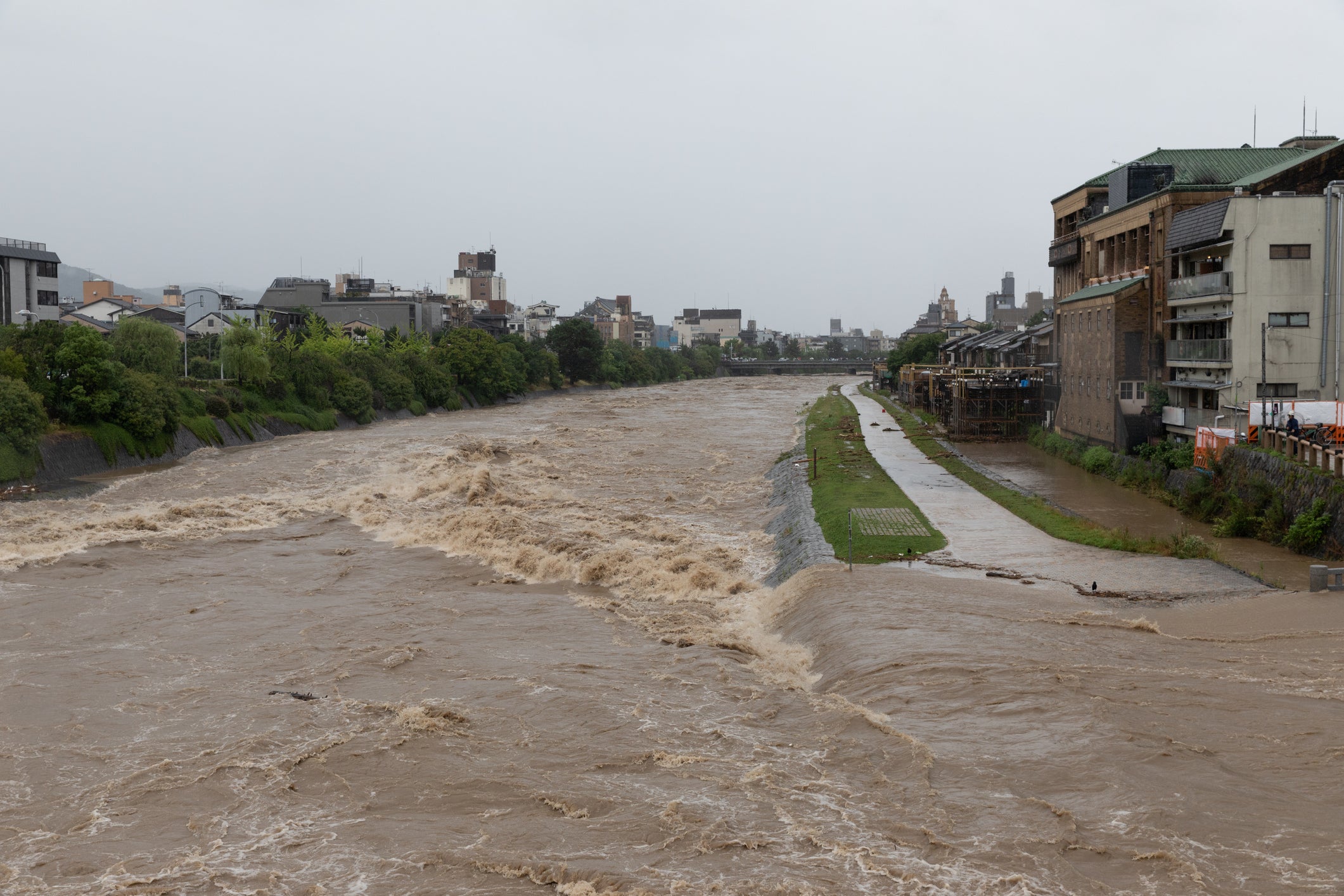Disasters and social disparities: Protection of the disabled and comprehensive disaster prevention strategies
table of contents
Introduction
1.Social disparities and the impact of disasters
2.Protection measures for disabled people
3. Comprehensive disaster prevention strategy
summary
Introduction
Disasters are important issues that have a major impact on society as a whole. However, its impact can be greatly influenced by social disparities. This article focuses on the theme of 'disasters and social inequality', with particular consideration to the protection of disabled people and comprehensive disaster prevention strategies.
1.Social disparities and the impact of disasters
Social inequality refers to unequal conditions in people's lives and opportunities. It can manifest itself in many ways, including economic differences, educational opportunities, and access to health care. On the other hand, disasters are serious events caused by natural or man-made disasters. When these two things are combined, people who are socially vulnerable can be particularly affected.
For example, when a natural disaster occurs, low-income people may find it difficult to move to appropriate evacuation sites and maintain their livelihoods. Reaching a suitable evacuation site can be difficult if the evacuation center is far away or you do not have transportation. The living environment inside the evacuation center will also be affected. Low-income shelters can have small spaces and lack adequate hygiene, increasing health risks.
Similarly, disparities in health and medical access become evident during disasters. Low-income and disabled people may have limited access to health insurance and appropriate medical care, making it difficult for them to cope with injuries and health problems caused by disasters.
Disparities in access to information are also noticeable during disasters. If evacuation and safety information is not properly communicated, people with disabilities may not be able to respond appropriately and risks may increase.
One reason why social disparities amplify the effects of disasters is the fact that people with disabilities are less able to cope with disasters due to existing unequal conditions. To address this, it is necessary to give priority consideration to the needs of socially disabled people in evacuation plans and the development of evacuation centers during disasters. It is also important to provide opportunities for people with disabilities to know appropriate measures to take through education and information provision.
Overall, the reality is that social disparities exacerbate the effects of disasters, and a comprehensive approach is required to correct them.
2. Protection of disabled people
2-1 Providing appropriate information
Appropriate information provision is essential to reducing risks during disasters. It is important to provide information in multiple languages and ensure barrier-free access to create an environment where all people, including immigrants and people with disabilities, can access appropriate information. Additionally, efforts should be made to widely disseminate information on evacuation procedures and safety measures so that everyone can take appropriate measures.
①Providing information in multiple languages
We provide information in multiple languages to immigrants, foreign nationals, and people who have difficulty accessing information due to language differences.
② Barrier-free information access
We will promote barrier-free access to information for people with disabilities such as the visually impaired and the hearing impaired. This includes providing Braille information and sign language interpretation.
2-2 Barrier-free evacuation shelters and facilities
Barrier-free shelters and facilities provide a safe evacuation environment for all people, including people with physical disabilities and the elderly. These include access for wheelchair users, the provision of toilets for people with disabilities, and the provision of appropriate treatment rooms. This allows everyone to receive appropriate care and evacuation, reducing health risks during disasters.
①Securing physical access
Provides barrier-free access for wheelchair users and the elderly. Consider installing ramps or elevators instead of stairs.
②Providing special care
We provide services for people who require special care, such as setting up examination rooms and nursing stations and preparing necessary medical equipment.
2-3 Strengthening social support
Strengthening social support is an important means of reducing risks during disasters, targeting the economically disadvantaged and those in need of psychological support. Financial assistance provides temporary assistance to help maintain livelihoods and secure stable shelter. Additionally, through psychological support, the aim is to improve people's ability to cope with the shock and stress of disasters and maintain their mental health. Enhancing social support can improve the ability of socially disabled people to respond to disasters.
① Financial support
Provide temporary financial support to low-income and unemployed people whose livelihoods may be disrupted by a disaster.
②Psychological support
If you need psychological support due to the shock and stress of a disaster, we provide counseling and psychotherapy.
2-4 Region-based approach
A region-based approach is a method of developing disaster prevention measures based on local characteristics and community voices. Local residents take the lead in reducing disaster risk by leveraging local needs and resources. Participation and cooperation of local communities is key, and the aim is to increase the effectiveness of information sharing and crisis management. By respecting regional differences and working together to formulate and implement countermeasures, we will build a more effective disaster prevention system.
① Participation of local communities
We involve local people, including people with disabilities, in dialogue and develop protection measures that respect their voices and needs.
②Developing regional leadership
We will develop local leaders and support them in effectively responding to disasters and sharing information.
2-5 Education and training
Education and training are important tools to improve appropriate behavior and response capabilities during disasters. Conduct disaster behavior guidelines and evacuation drills in schools and communities to help people acquire the correct knowledge and skills. We also check the effectiveness of our plans through regular exercises and simulations, and use our experience to improve our measures. Through education and training, the aim is to raise people's disaster prevention awareness and learn how to act in preparation for disasters.
①Evacuation drill
Provide evacuation procedures and safe behavior training to disabled people and local communities.
② Information dissemination activities
We work to disseminate information for people with disabilities on how to deal with disasters and how to use resources.
3. Comprehensive disaster prevention strategy
3-1 Risk assessment and planning
Risk assessment and planning is the process of analyzing the risk of disaster and planning appropriate countermeasures based on it. Assess regional vulnerability and identify dangerous areas and evacuation routes. We also plan evacuation procedures, relief operations, communication strategies, etc. in the event of a disaster. Through this, we aim to establish a system that can effectively respond in the event of a disaster and minimize damage.
① Vulnerability analysis
Assess the social and economic vulnerability of a region and identify which parts are most susceptible to disasters.
②Risk mapping
It shows risks of natural and man-made disasters on a map, and clarifies dangerous areas and evacuation routes.
③Emergency response plan
Develop evacuation procedures, relief operations, communication strategies, etc. in the event of a disaster.
3-2 Local community participation
Local community participation is an approach that promotes disaster prevention measures together with local residents. We will respect local knowledge and experience and strengthen cooperative systems. We will build an effective disaster prevention system by having local residents share disaster risks and consider and implement appropriate countermeasures together. By reflecting the voices of local communities, we aim to implement measures that suit local conditions and create a safe environment.
① Strengthening regional networks
We will build a cooperative system within the region and strengthen information sharing and cooperation.
② Encouragement of volunteer activities
Invite local residents to participate in disaster prevention activities as volunteers and encourage cooperation throughout the region.
3-3 Education and training
Education and training are important efforts to improve appropriate behavior and response capabilities during disasters. We provide education on disaster risks and evacuation procedures in schools and communities so that people have the correct knowledge and behavior. Through regular exercises and simulations, we develop the ability to respond to real-life situations. This will prepare individuals and communities to make calm judgments and take safe and swift action in the event of a disaster.
①Education at school
We will implement disaster behavior guidelines and evacuation drills at school to raise children's awareness of disaster prevention.
②Community education
We will improve disaster prevention awareness among local residents through local workshops and seminars.
3-4 Utilization of technology
Utilizing technology is an effective way to strengthen disaster prevention measures. We support disaster prediction and damage mitigation through early warning systems and data analysis. It also helps improve information sharing and communication, enabling quick responses. We also use technology to provide training and simulations to help people prepare and behave appropriately. The innovative use of technology aims to develop effective countermeasures and minimize damage during disasters.
① Early warning system
Implement early warning systems for earthquakes, floods, etc. to buy time to minimize damage.
②Data analysis
We analyze local data to help predict disaster risks and take appropriate countermeasures.
3-5 Continuous evaluation and improvement
Continuous evaluation and improvement is an important process to maintain and improve the effectiveness of disaster prevention strategies. We evaluate the effectiveness of countermeasures and identify problems through regular exercises and simulations. We will reflect on the lessons learned from past disaster experiences and add or improve new countermeasures. We keep up with the latest information and best practices as information and technology evolve. Continuous evaluation and improvement ensure a prompt and appropriate response in times of disaster and ensure the safety of society as a whole.
① Exercises and simulations
Through regular disaster prevention exercises and simulations, we confirm the effectiveness of the plan and identify areas for correction.
②Sharing experiences
We will share experiences and lessons learned from past disasters and utilize them for future countermeasures.
A comprehensive disaster prevention strategy is an approach that focuses not only on disaster response but also on disaster prevention and risk reduction. By working together as a whole, we will be able to build a safer society.
summary
Disasters and social disparities are closely related, and there is a need to protect the disabled and establish comprehensive disaster prevention strategies. It is important for society as a whole to work together to create an environment where everyone can safely respond to disasters. By respecting the voices of people with disabilities and implementing measures that are tailored to their needs, we will be able to create a fairer and safer society.







